The Strategic Advantage of Trumpf TRU LASER Retrofit
Modern manufacturers are always looking for ways to boost productivity and cut operational costs. For those with older Trumpf TRU LASER systems, a retrofit offers a compelling alternative to buying new equipment. A Trumpf TRU LASER retrofit involves upgrading core parts of your existing machine.
These upgrades might include the laser source, cutting head, and control system, leading to better performance, efficiency, and a longer lifespan. This allows you to capitalize on your initial investment while accessing newer technologies. This approach offers a strategic advantage, maximizing existing assets while minimizing downtime and capital expenses. So, why are leading fabricators choosing this route?
Why Retrofit Your Trumpf TRU LASER?
The decision to retrofit often boils down to a straightforward cost-benefit analysis. Buying new machinery is a major financial commitment. Retrofitting, on the other hand, presents a more budget-conscious option.
For example, switching to a more efficient fiber laser source can drastically reduce energy consumption and operating costs. Over time, these savings can offset the retrofitting expense. Plus, retrofits minimize production interruptions compared to installing and integrating a brand new machine.
Trumpf laser machine retrofits, especially from CO2 to fiber lasers, are a growing trend for improving performance and cutting costs. Companies like Sky Fire Laser specialize in these upgrades for Trumpf equipment. They offer significant benefits like lower electricity and gas bills, along with faster production speeds. One metal fabrication company reported saving thousands on electricity after upgrading, while also increasing production speed. This process is not only cost-effective but also environmentally friendly, extending the lifespan of existing machines by up to 10 years. It avoids large-scale construction and reduces the need for operator retraining. This technology supports sustainability by minimizing the need for new machine production, which consumes considerable resources and has a significant environmental impact. Retrofits contribute to environmentally responsible manufacturing by reducing waste and conserving resources. Learn more about the benefits of Trumpf laser retrofits here.
Is Your TruLaser a Candidate for Retrofitting?
Not every Trumpf TRU LASER is a good fit for retrofitting. Feasibility depends on factors like the machine’s age, condition, and desired performance gains. A thorough equipment assessment is essential.
This evaluation should consider the state of the mechanical parts, the control system’s capabilities, and the potential for integrating newer technologies. A successful retrofit strategy ultimately depends on aligning the upgrade with your production needs and business goals. This will allow you to achieve substantial performance improvements and extend the life of your Trumpf equipment without the significant investment of a new machine.
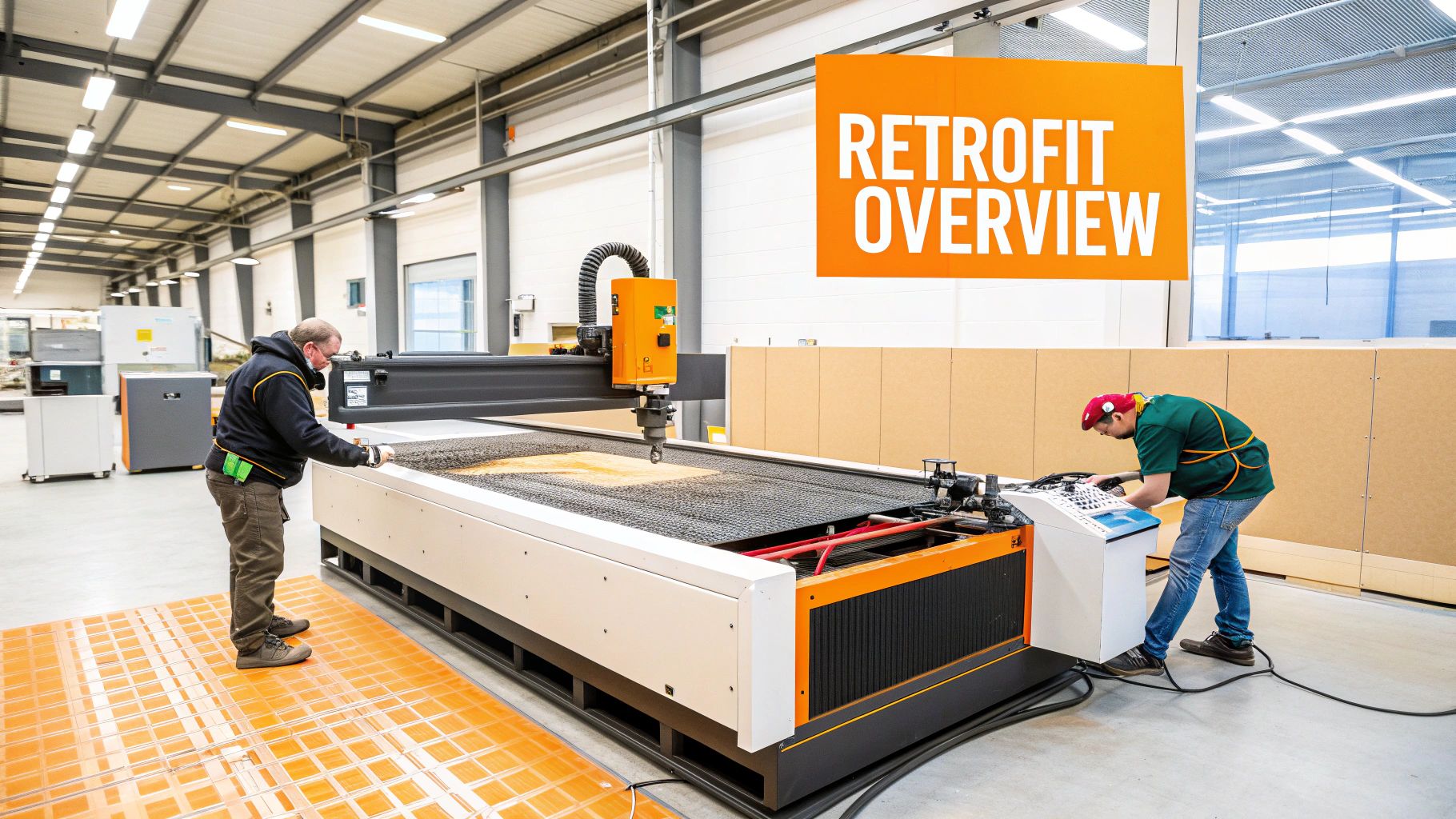
CO2 to Fiber: The Transformation That Pays For Itself
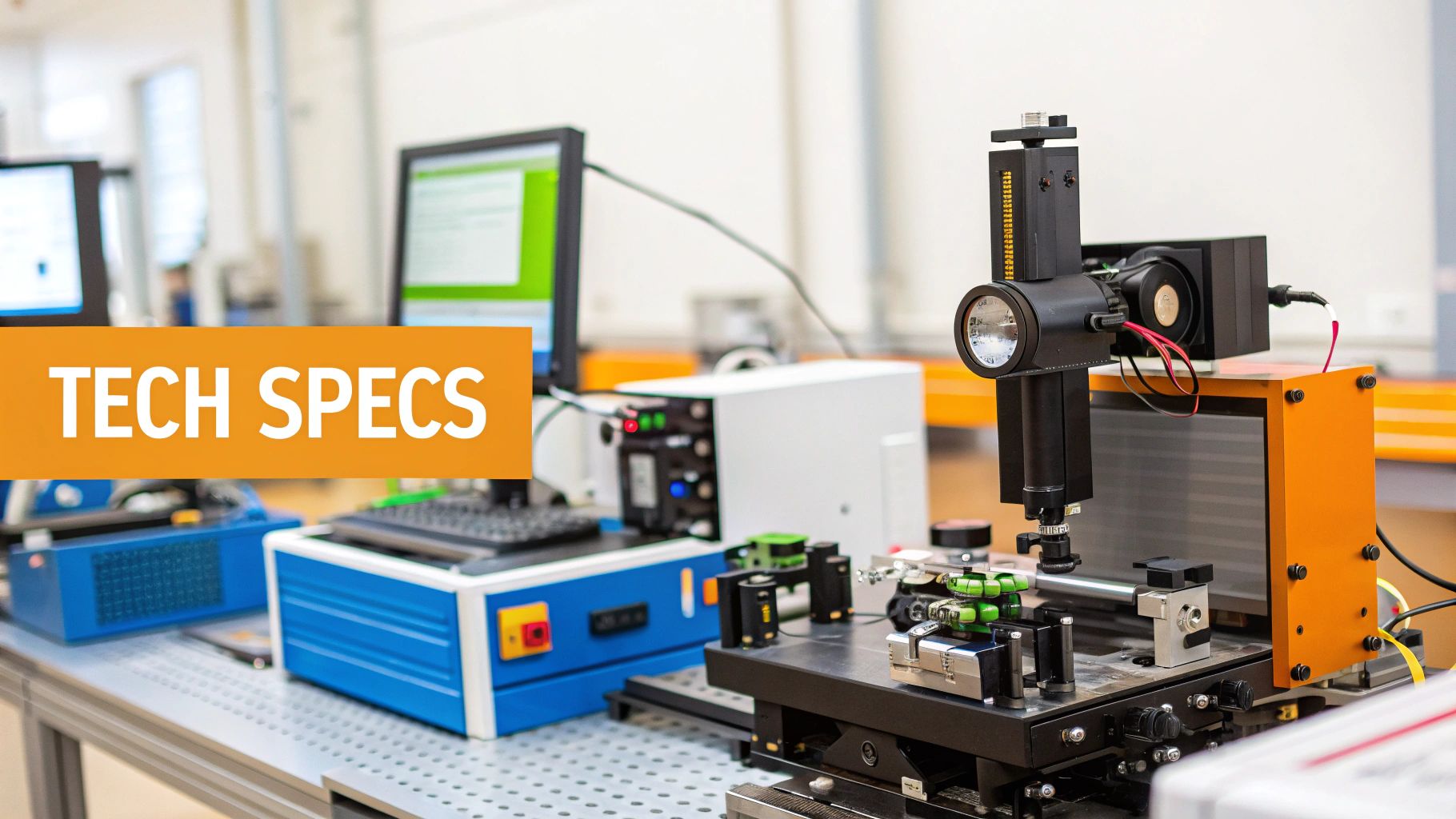
Upgrading your Trumpf TRU LASER from CO2 to fiber laser technology represents a significant leap forward in laser cutting. It's a complete overhaul that delivers a powerful combination of speed, precision, and efficiency not possible with older CO2 systems. This upgrade will impact your entire production workflow, from how you handle materials to the quality of the final cut.
Understanding the Technological Leap
CO2 and fiber lasers differ fundamentally in how they create the laser beam. CO2 lasers use a gas mixture, while fiber lasers utilize optical fibers and laser diodes. This core difference leads to significant practical advantages. Fiber lasers have a much higher energy conversion efficiency, around 30%, compared to 10-15% for CO2 lasers.
This higher efficiency means less energy is lost as heat, resulting in lower energy costs and a reduced environmental impact. A 6000W fiber laser, for example, consumes about half the power of a comparable CO2 laser. This translates to direct savings on your operating expenses. For more information on laser technology, you can explore resources like How to master....
The Retrofit Journey: What to Expect
Retrofitting a Trumpf TRU LASER involves replacing the laser source and cutting head, and integrating a new control system, all while keeping the existing machine framework and motion system. The entire process typically takes just two to three days, minimizing any disruption to your production schedule. Many companies choose to do installations over a weekend to further reduce downtime.
This approach lets you quickly transition to the improved capabilities of fiber laser technology without needing extensive facility modifications. Since the basic machine structure remains the same, you also avoid the need to retrain operators on a completely new machine, saving valuable time and resources.
Measurable Improvements: Real-World Results
The advantages of a Trumpf TRU LASER retrofit go far beyond energy savings. Fiber lasers offer dramatically faster cutting speeds, especially when working with thinner materials. This boost in throughput leads to increased productivity and quicker order fulfillment. Cutting thin sheet metal, for instance, can be up to four times faster with a fiber laser compared to a CO2 laser.
Fiber lasers also excel at cutting reflective materials like copper and brass, materials that pose a challenge for CO2 lasers. This expanded material capability opens doors to new production possibilities and potential market opportunities. Finally, fiber lasers provide superior precision and a narrower kerf width, resulting in cleaner cuts and less material waste. This increased precision can unlock more intricate designs and tighter tolerances in your finished products.
To illustrate the key differences between these two technologies, let's look at a detailed comparison:
The following table provides a comprehensive comparison between traditional CO2 laser technology and modern fiber laser systems as implemented in Trumpf machines.
| Feature | CO2 Laser | Fiber Laser | Improvement Factor |
|---|---|---|---|
| Energy Efficiency | 10-15% | 30% | 2x - 3x |
| Cutting Speed (Thin Materials) | 1x | Up to 4x | Up to 4x |
| Cutting Reflective Materials | Difficult | Excellent | Significant |
| Kerf Width | Wider | Narrower | Reduced |
| Operating Costs | Higher | Lower | Reduced |
This table highlights the significant advantages of fiber laser technology over CO2 lasers, particularly in energy efficiency, cutting speed, and the ability to process reflective materials. The narrower kerf width and lower operating costs further contribute to a more efficient and cost-effective production process.
Bringing Your TruLaser Into the Industry 4.0 Ecosystem
The gap between older equipment and the demands of modern, connected manufacturing can feel overwhelming. However, Trumpf TRU LASER retrofits offer a practical solution, bridging this divide and providing a manageable path to Industry 4.0. These retrofits go beyond simple mechanical upgrades, transforming older machines into integral parts of a networked production system. This allows manufacturers to achieve significant improvements without the expense of replacing their entire existing infrastructure.
Connecting Isolated Machines for Networked Production
Previously isolated TruLaser machines can be seamlessly integrated into complex production networks with a targeted retrofit. By incorporating digital monitoring systems and networked production capabilities, manufacturers unlock access to real-time data and enhanced control.
For instance, a Trumpf TRU LASER retrofit can empower operators to remotely monitor machine performance, diagnose problems, and even predict maintenance requirements. This leads to substantial cost savings and minimizes downtime. This interconnectedness enables manufacturers to optimize workflows for peak efficiency and quickly adapt to shifting demands. Integrating your TruLaser into the Industry 4.0 ecosystem often involves managing older systems; consider this article on Legacy systems for further strategies.
Data-Driven Manufacturing: Unlocking New Potential
The TruLaser series by Trumpf, including models like the TruLaser 3030, has benefited from substantial advancements through retrofits, notably the integration of OPC UA technology. This enables older machines to connect with modern software systems, facilitating digitally networked production and boosting competitiveness.
The retrofitting process is relatively quick and cost-effective, reflecting Trumpf's dedication to extending machine lifespan and promoting sustainability. The OPC UA Retrofit Cube, for example, facilitates modernization without extensive modifications, ensuring machines remain valuable in the current industrial landscape. This approach conserves resources and reduces environmental impact. Learn more about extending machine life here.
Predictive Maintenance and Remote Diagnostics
Proactive manufacturers are utilizing digital retrofits to implement predictive maintenance and remote diagnostics. This forward-thinking approach minimizes unplanned downtime and extends the operational life of existing equipment.
Imagine detecting a potential problem before it leads to a costly production stoppage. This is the advantage of a connected, data-driven manufacturing strategy. Remote diagnostics further enable technicians to address issues from any location, shortening response times and minimizing disruptions.
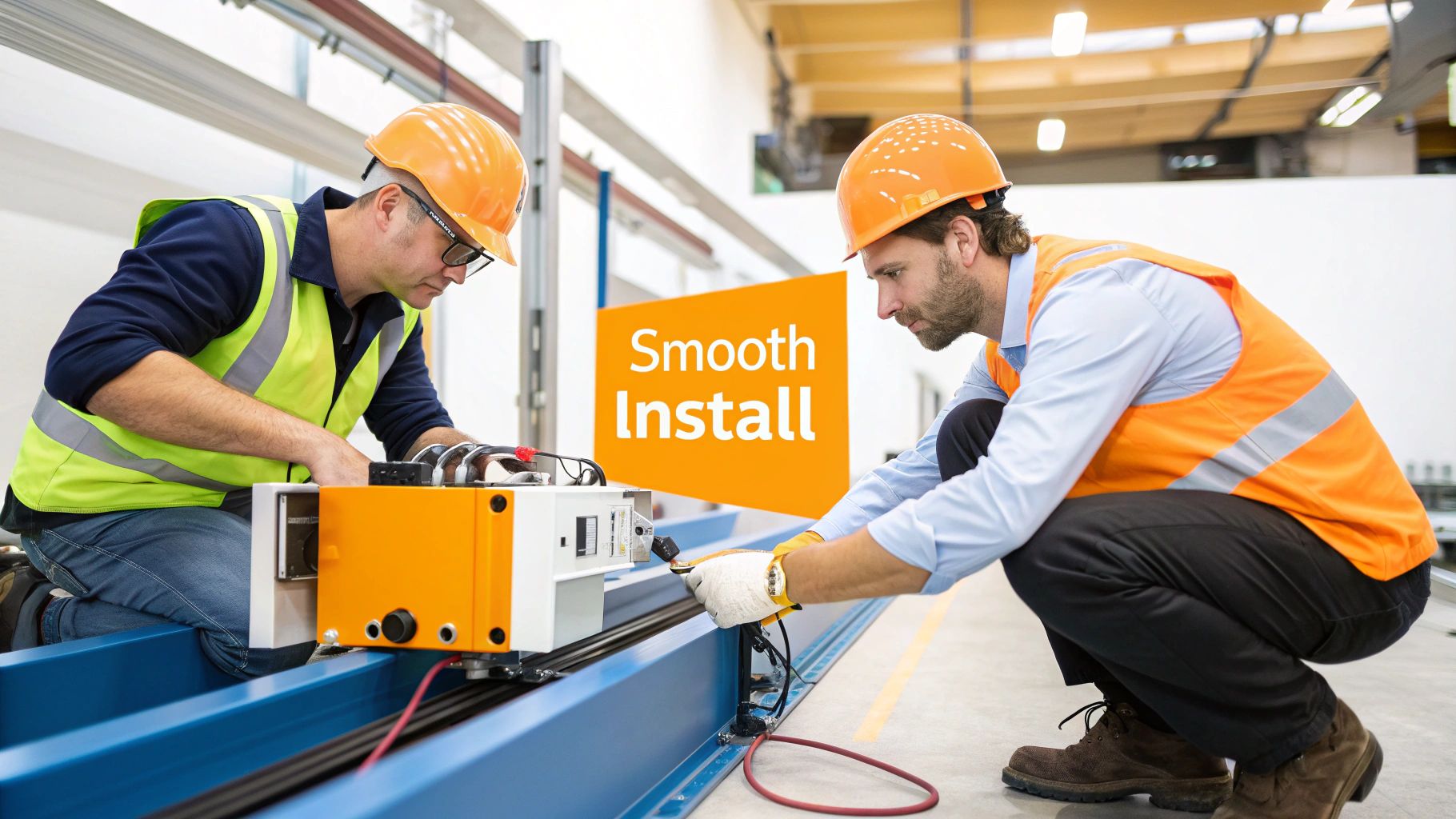
Optimization for Industry 4.0 Implementation
Trumpf TRU LASER retrofits offer a practical and budget-friendly route to Industry 4.0. By integrating older machines into the digital environment, manufacturers safeguard their current investments while realizing the advantages of a connected factory.
This method allows for a phased implementation of Industry 4.0 principles, simplifying the transition and reducing disruption. Through these digital enhancements, manufacturers can achieve greater efficiency, improved quality control, and increased flexibility in responding to market fluctuations. This modernized approach facilitates continuous improvement and supports data-driven decision-making, ultimately creating a more competitive and sustainable future.
Expanding Capabilities With Strategic Add-On Modules
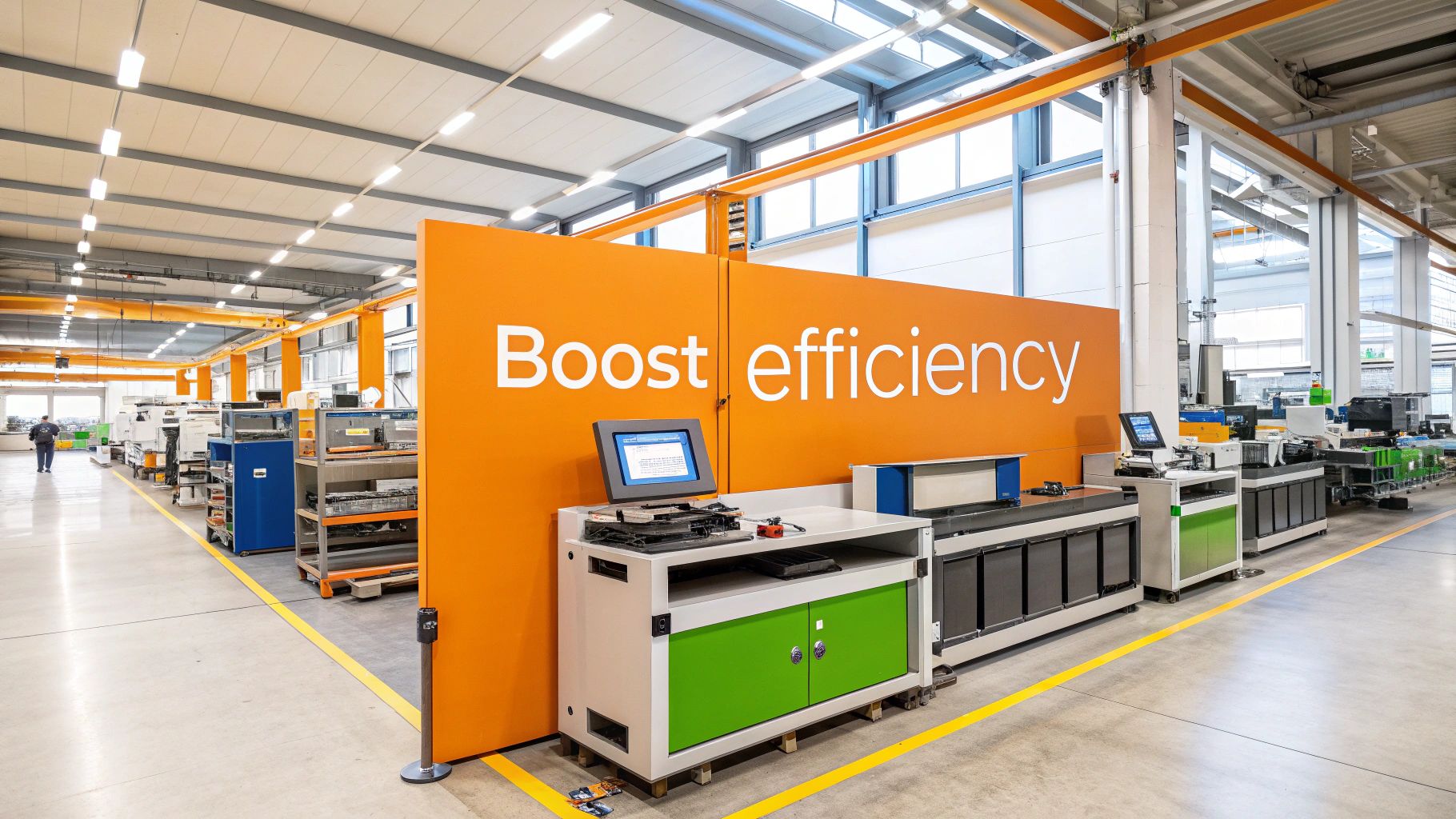
A Trumpf TRU LASER retrofit isn't simply about swapping out old components. It's a calculated move to boost your machine's performance and unlock new business avenues. Smart manufacturers are getting the most out of their retrofits by adding modules that extend the machine's functionality and meet changing customer demands. This allows them to offer a wider array of services and products without the high cost of a brand new, specialized machine. Let's delve into some of the key add-on modules transforming TruLaser systems.
Rotary Axis Modules: Processing Tubes and Profiles
One of the most sought-after additions for a Trumpf TRU LASER retrofit is the rotary axis module. This module allows for processing tubes and profiles, bringing a whole new level of versatility to your machine. Think about expanding your product line to include custom-designed tubular parts or intricate profile cuts. This add-on makes this kind of diversification a reality.
This not only broadens the types of products you can manufacture but also improves the accuracy and efficiency of working with these materials.
The TruLaser series, particularly models like the TruLaser 5030 and 5040, can be retrofitted with features like the RotoLas for tube and profile processing. This allows for expansion without the need to buy entirely new machines. The TruTops Tube program ensures precise calculations for complex shapes, boosting both accuracy and efficiency. Retrofitting extends the machine's lifespan and enhances its functionality, making you more competitive. Trumpf's emphasis on predictive maintenance and condition monitoring further enhances longevity. Find more detailed statistics here.
Automated Material Handling: Boosting Efficiency
Another valuable add-on is an automated material handling system. This system streamlines the process of loading and unloading materials, significantly reducing manual labor and boosting throughput. This automation minimizes downtime and maintains a steady flow of materials to and from the laser cutting area.
For companies dealing with labor shortages or wanting to improve production flow, this upgrade is essential. This increased efficiency can result in larger production volumes and quicker turnaround times. For high-volume manufacturers, adding automated material handling as part of a Trumpf TRU LASER retrofit is often the best way to achieve significant productivity gains.
Specialized Cutting Heads: Expanding Material Versatility
Expanding material versatility is a major advantage of retrofitting. Specialized cutting heads enable processing of a wider range of materials, such as reflective metals like copper and brass. These materials can be difficult to work with using standard cutting heads. Adding this capability expands the types of projects you can take on, opening doors to new market segments and revenue streams.
Practical Considerations For Add-On Modules
When considering add-on modules, think about floor space requirements, operator training needs, and realistic integration timelines. Careful planning is essential. Some modules may require extra space around the machine. Evaluate your facility layout and make necessary changes.
Also, consider the time needed for operator training on the new modules. While often user-friendly, proper training ensures operators can use the new features safely and effectively. A thorough implementation plan covering these details is key for a successful retrofit. This plan should outline schedules, resource allocation, and any facility modifications. By addressing these practical matters upfront, you can minimize disruptions and maximize the benefits of your Trumpf TRU LASER retrofit.
The Real Numbers: ROI Analysis That Drives Decisions

A Trumpf TRU LASER retrofit offers compelling technical advantages. But how does it impact your bottom line? This section explores the return on investment (ROI) of retrofitting, providing the financial data you need to make a smart decision. We'll examine the costs, savings, and payback periods experienced by manufacturers. This information will help you evaluate the financial viability of a Trumpf TRU LASER retrofit for your specific operational requirements.
Capital Investment: Retrofit Vs. New Machine
The initial capital outlay is a major factor when deciding whether to retrofit. A brand new Trumpf TRU LASER machine can cost anywhere from $600,000 to $1 million, a significant investment. A Trumpf TRU LASER retrofit, however, typically costs less than $300,000. This substantial difference makes retrofitting a financially attractive option, particularly for companies seeking modernization without a large capital expenditure.
This cost savings can free up capital for other strategic initiatives. It allows for more efficient resource allocation, balancing modernization with other important business needs. For further strategic considerations, you might be interested in How to master....
Operational Savings: Energy, Maintenance, and Productivity
Beyond the initial cost savings, a Trumpf TRU LASER retrofit offers ongoing operational advantages. The enhanced energy efficiency of fiber lasers translates directly to lower electricity bills. Transitioning from a CO2 laser to a fiber laser can reduce electricity consumption by 50% or more, resulting in considerable savings over time.
Fiber lasers also require less maintenance than CO2 lasers, minimizing downtime and lowering maintenance costs. Annual savings on maintenance alone can be at least $5,000. Plus, the increased cutting speed and productivity of fiber lasers lead to higher throughput and faster order fulfillment, contributing to increased profitability and a more competitive edge.
Financial Planning: Payback Periods and Long-Term Value
Calculating the payback period is essential for accurately assessing the financial benefits. This is the time it takes for accumulated savings to equal the initial investment. The typical payback period for a Trumpf TRU LASER retrofit can vary based on factors such as the machine model, production volume, and the materials being processed.
Many manufacturers experience payback periods of two to three years, sometimes even shorter. This relatively quick return on investment makes retrofitting an appealing choice. Even after the payback period, a retrofitted TRU LASER continues to generate savings, enhancing long-term value and extending the machine's operational life.
The table below illustrates the potential ROI of different Trumpf TRU LASER retrofit packages:
To help illustrate the potential return on investment, we've compiled a table outlining typical costs, savings, and payback periods for different retrofit packages.
Trumpf TRU LASER Retrofit ROI Analysis
| Retrofit Type | Average Cost | Annual Savings | Typical Payback Period | 10-Year TCO Reduction |
|---|---|---|---|---|
| Basic Fiber Laser Conversion | $150,000 | $75,000 | 2 years | $600,000 |
| Advanced Fiber Laser with Autofocus | $250,000 | $125,000 | 2 years | $1,000,000 |
| Full System Upgrade with New Controls | $300,000 | $150,000 | 2 years | $1,200,000 |
As you can see, even the most basic retrofit can deliver significant cost savings over a ten-year period.
Financing and Tax Incentives: Maximizing Financial Benefits
Several financing options can further enhance the financial case for a Trumpf TRU LASER retrofit. Equipment financing or leasing arrangements allow manufacturers to distribute the cost of the retrofit over time. Additionally, exploring potential tax incentives, such as deductions or credits for energy-efficient equipment upgrades, can reduce the overall cost and shorten the payback period. By leveraging these options, manufacturers can maximize the financial benefits of retrofitting their Trumpf TRU LASER machines.
Your Retrofit Roadmap: From Planning to Peak Performance
Manufacturing leaders know that successful Trumpf TRU LASER retrofits depend on a solid strategy. This section offers a roadmap for planning and executing your retrofit, from the initial evaluation to continuous improvement and optimization. A structured approach will ensure your retrofit aligns with your business objectives and maximizes your return on investment.
Needs Assessment: Defining Your Objectives
A thorough needs assessment is crucial before starting a Trumpf TRU LASER retrofit. This involves analyzing your current production capacity, pinpointing bottlenecks, and defining your desired results. What specific problems are you hoping to solve? Are you looking to increase production output, work with more types of materials, or improve accuracy?
Clearly defined objectives will guide your retrofit decisions and ensure you select the right upgrades. For example, if you want to process thinner materials more quickly, a fiber laser conversion might be the best choice. If you need to process a wider variety of materials, adding specialized cutting heads may be more effective. This initial assessment forms the basis of a successful retrofit. Also, check out How to master... for more information on strategic planning.
Project Management: Timeline, Resources, and Continuity
Effective project management is essential for smooth retrofit implementation. Create a practical timeline that encompasses all phases of the project, including the first consultations and equipment evaluations through installation, testing, and operator training. Dedicate enough resources—staff, budget, and time—to ensure each phase is completed efficiently.
Maintaining operational continuity during the retrofit is vital. Collaborate closely with the retrofit provider to minimize downtime and disruptions to your production schedule. Many retrofits can be implemented over a weekend to limit the impact on daily operations. Careful planning ensures a seamless transition and minimizes the effect on your business.
Implementation Challenges and Training
Even with detailed planning, some implementation difficulties may occur. Anticipating these challenges is important. Integrating new control systems with existing software may require modifications. Adding new modules might require facility adjustments.
Addressing these potential issues in advance can save time and money. Thorough operator training on the new features is also important. This training empowers your team to use the upgraded equipment effectively and reach its full potential. Proven training approaches that combine theory and hands-on practice can accelerate the learning curve and increase operator confidence.
Performance Metrics and Optimization
Establish practical performance metrics to gauge the success of your Trumpf TRU LASER retrofit. These metrics should align with your initial goals. Monitor important indicators such as cutting speed, material usage, energy consumption, and maintenance expenses.
Regularly evaluating these metrics will help you identify areas for improvement and optimize the performance of your retrofitted machine. Continuous improvement is an iterative process. It involves examining performance data, making adjustments as needed, and constantly refining your processes to maximize long-term benefits.
By focusing on a well-defined roadmap, detailed planning, and consistent optimization, you can ensure your Trumpf TRU LASER retrofit provides maximum value and delivers optimal performance for years to come. Ready to explore the possibilities? Discover how Laser Insights China can help you modernize your operations and achieve your production objectives. Visit us at https://laser-podcast.com to learn more.
